Recommended Routes
Shiga – Fukui (2-day/1-night trip, Otsu City, Omihachiman City, Hikone City, Shiga Prefecture Awara City, Maruoka Town, Ono City, Fukui City, Fukui Prefecture)
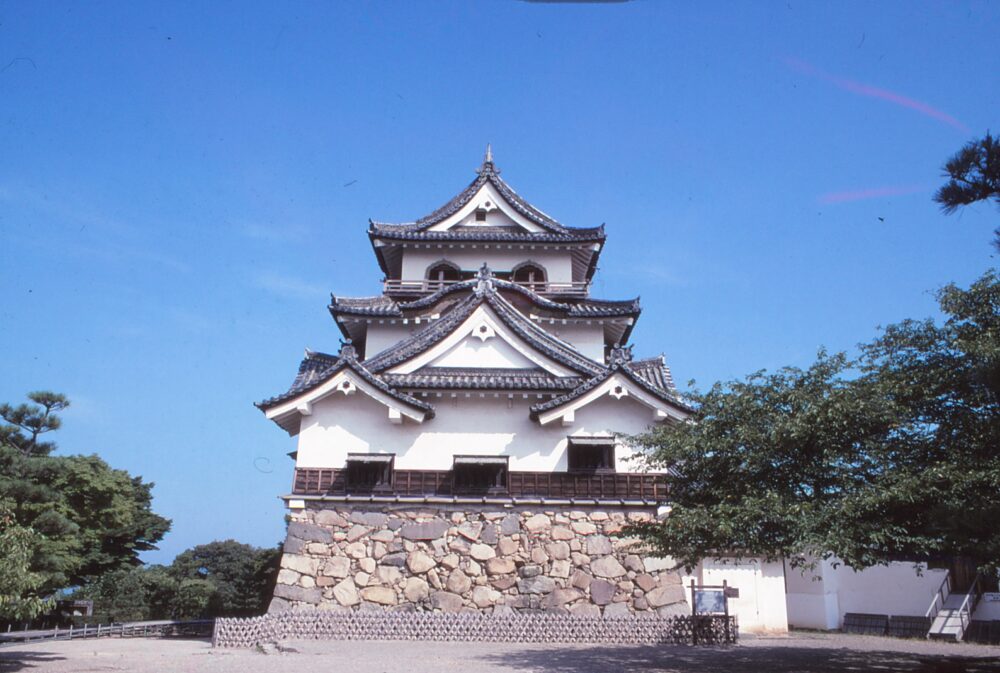
From Shiga to Fukui, there remain many old battlefields and castles where numerous warlords fought during the Warring States Period.
On the first day, we will visit the ruins of Azuchi Castle, Omi-Hachiman with its castle ruins and townscape, and Hikone Castle, a national treasure.
On the second day, we will visit Maruoka Castle, where the castle tower built before the Edo period still remains, Echizen Ono Castle, called the castle in the sky, and the remains of the Asakura family's castle.
Video
Tabinohoshi “Ruins of Fukui Castle and Ruins of the Ichijodani Asakura Clan” Fukui
Access
By car
Kyoto = (Keihan National Expressway) = Kyoto Minami IC = (Meishin Expressway) = Ryuo IC = (National Road No. 8, Prefectural Road) = Shinmachi Dori = (Cable) = Hachimanyama Castle Site = (Cave) = (Walk) = Himure Hachiman Shrine = (Prefectural Road) = Azuchi Castle Site = (National Road No. 8, Prefectural Road) = Hikone Castle = (Walk) = Hikone Castle Town Tour = (National Road No. 8, Prefectural Road) = Hikone IC = (Meishin Expressway) = Maibara JCT = (Hokuriku Expressway) = Kanazu IC = Awara Onsen, Fukui Prefecture = (Fukui Bypass) = Maruoka = Echizen Ono Castle = Asakura Clan Museum and Garden = Fukui IC = (Hokuriku Expressway) = Maibara JCT = (Meishin Expressway) = Kyoto South IC = (Keihan National Expressway) = Kyoto
Route
- Kyotoby car
- Shinmachi Dori(street)on foot
- Hachimanyama Castle Siteon foot
- Himure Hachiman Shrineby car
- Azuchi Castle Ruintsby car
- Hikone Castle on foot
- Hikone Castle Town Tourby car
- Awara Onsenby car
- Maruoka Castleby car
- Echizen Ono Castle by car
- Echizen Ono Castle
Highlights
-
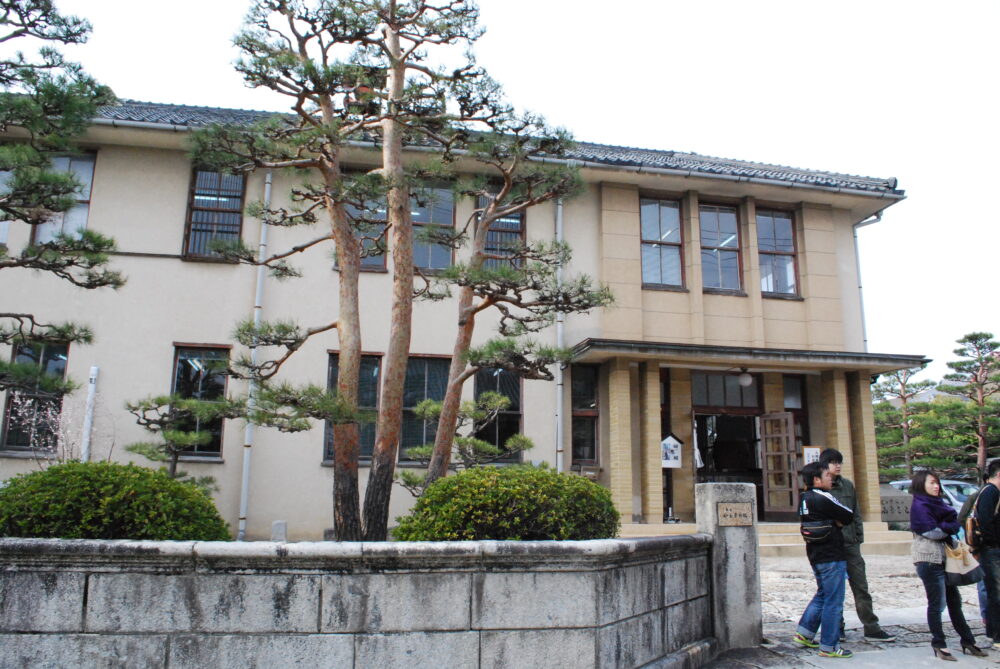
Rekishi Minzoku(Historical of Anthropology) Museum
You can enjoy the life of Ohmi merchants in the building. The house in the Edo period was restored into the museum. You can watch merchants' simple life through the exhibitions such as farm implements, furniture, and so on.
Admission fee:300yen for adults
Access:Ohmihachiman Station (JR Biwako Line)] You should get off at Owatacho-shiryokan-mae bus stop to Chomeiji Temple of Ohmi Buses.
-

Hachiman-bori Moat
It was originally a school built in 1877. You can get information and watch exhibitions there.
Hatimanbori is the place of transmitting for troopships in the Biwa Lake and association with a castle town. There stands a line of storehouse with white thick mortar walls along the moat. It tells us the prosperity there in old times. Close:At the end of the year and the start of the year
Access:25 min. walk from Ohmiyawata Station (JR Biwako Line) -
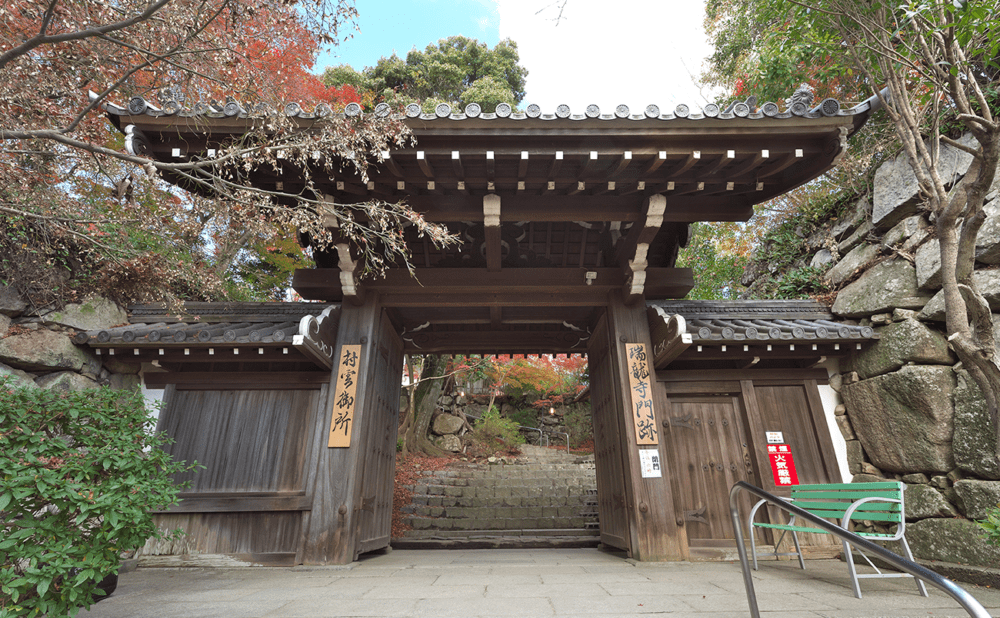
Hachimanyama Castle site
The 272-meter Mt. Hachimanyama is located on the north side of Omihachiman and has played a key role in the town’s history.
Omihachiman was founded as a castle town in 1585, when Toyotomi Hidetsugu (1568–1595) built Hachimanyama Castle on the mountain. Hidetsugu was the nephew and heir of the warlord Toyotomi Hideyoshi (1537–1598), who was aiming to unify Japan.
Parts of the stone ramparts of Hachimanyama Castle remain on the mountain, and Zuiryuji is located on the site of the castle’s main keep. -
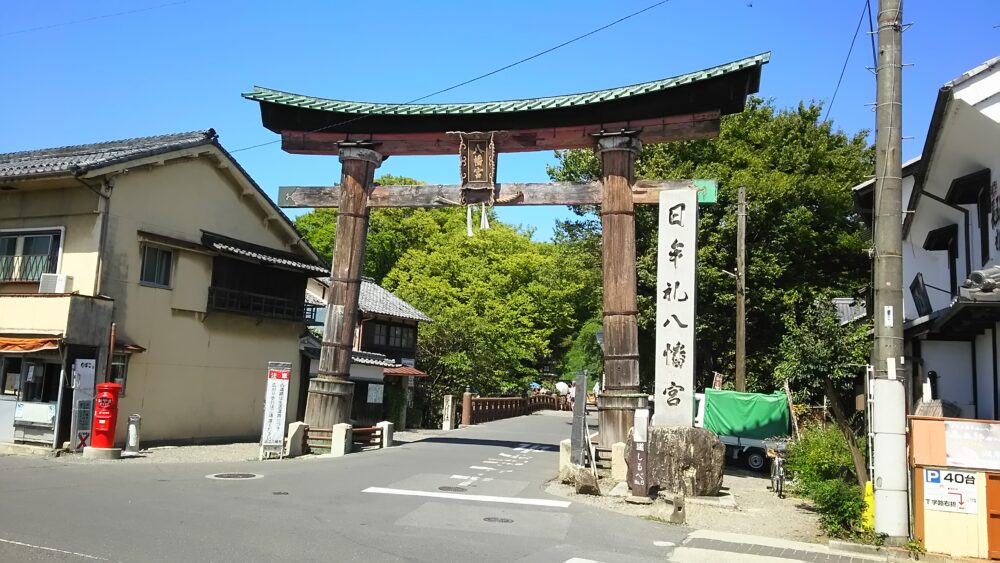
Himure-Hachimangu Shrine
A graceful "hiwadabuki" roof is a feature. The hall keeps the wooden statue of sitting God (the important cultural property). Floats and torches in Sagicho Festival are on display there.〈 Access:A two-minute walk from "Ropeway-mae" bus stop by Omi bus to Chomeji Temple from [JR Biwako Line ・Omihachiman Station]
-
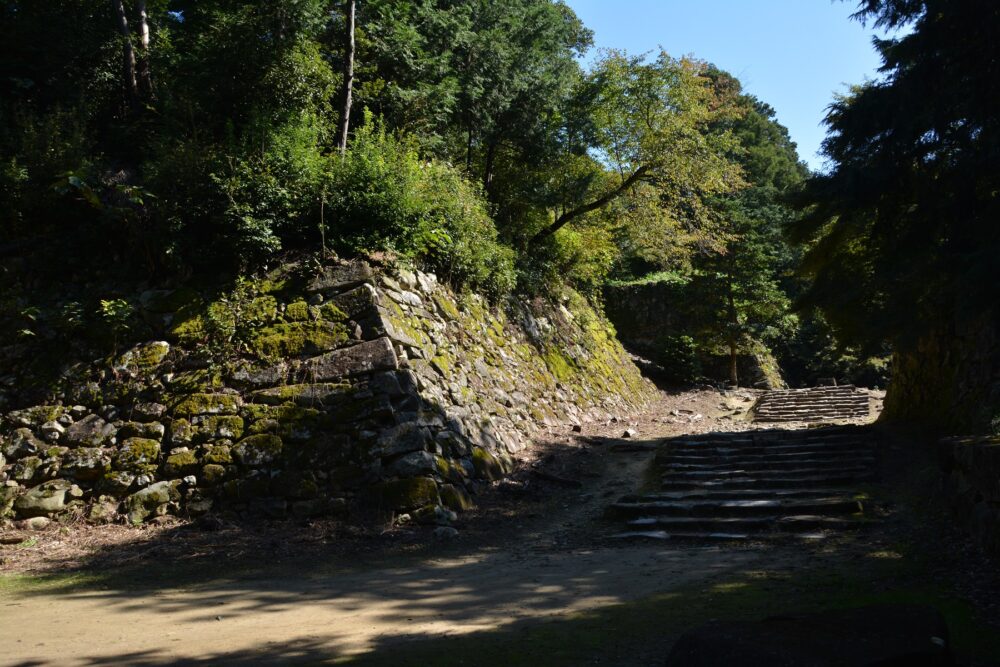
Azuchi Castle Ruins
Located in the area of Mt. Azuchi, 198m above sea level, northeast of JR Azuchi Station, the castle ruins of Oda Nobunaga (1534-82) are designated as a special national historic site. After the Honnoji Incident in which Nobunaga Oda fell, the castle was burnt down and only the stonewalls remain.
Fee: 700 yen
Admission hours: 8:30-17:00 (last admission at 16:00) -
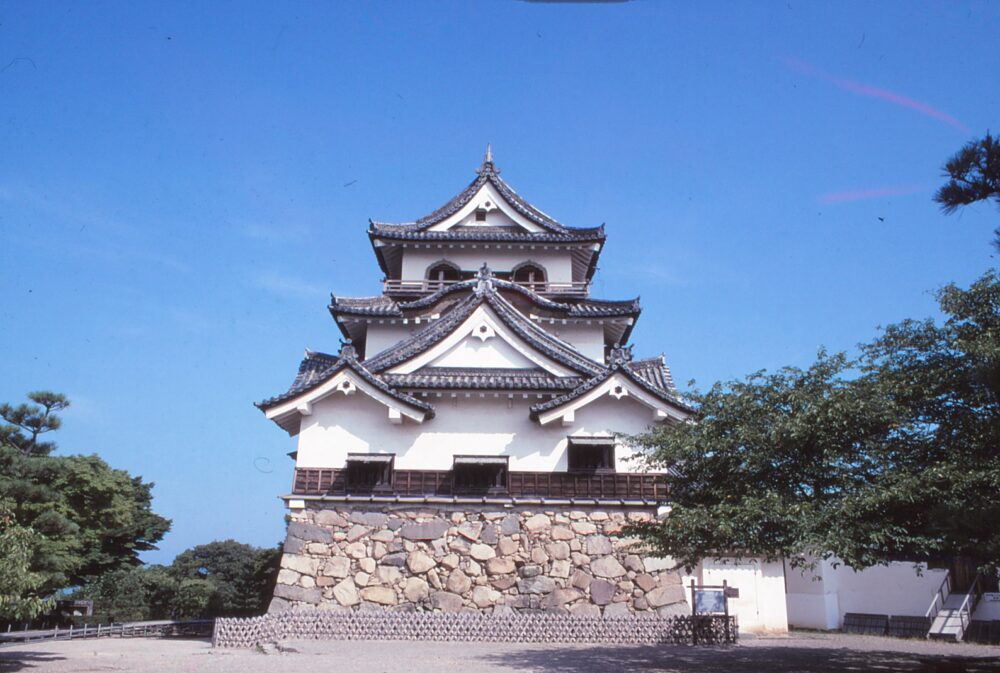
Hikone-jo Castle
Known as one of the 8 scenic sites on Lake Biwa because of its beauty in the moonlight and built with 350,000 stones, Hikone-jo Castle was the home of the Ii Clan who ruled over Hikone. The 3-story 3-roof keep, the Sawaguchimon-yagura Turret and Tenbin-yagura Turret still look as they did in the day. On the grounds is found the Hikone Castle Museum, which has its own Noh stage and teahouse.
How to get there: Approx. 10 min on foot from Hikone Station of the JR Biwako Line
Open: 8:30am - 5:00pm
Admission fee: 600yen (Castle and Genkyu-en Garden)
Closed: Open year-round -

Awara Hot Spring
Awara City, located in the northernmost part of Fukui Prefecture, is home to the Awara Hot Springs.
Since the Mikuni Line of the former Japanese National Railways opened in 1912, the city has developed as a hot spring resort, and has been loved by many writers and artists. In 1927, 11 hot springs were selected for inclusion in the “100 Views of Japan,” and Awara Onsen was selected as one of them. -
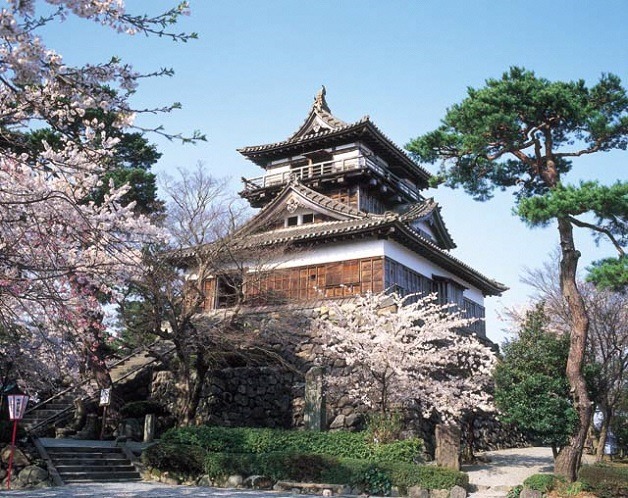
Maruoka Castle
Maruoka Castle was built in 1576 during the Warring States period. The castle tower (designated as a National Important Cultural Property) has a two-story exterior and a three-story interior. In spring, approximately 400 cherry trees, which are recognized as one of the 100 best cherry blossom viewing spots in Japan, add beauty to the old castle, which is also known as Kasumigajo.
Admission fee: 450 yen
Admission hours: 8:30 - 17:00 (Ticket sales end at 16:30) -
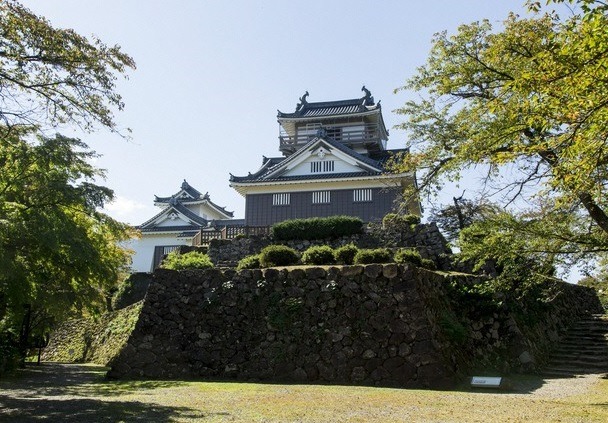
Echizen Ono Castle
The castle had a two-story, three-story main keep, a two-story, two-story minor keep, a secondary keep, and a third keep, and was surrounded by an outer moat and inner moat. The stonewalls were built using the “Nozura-zumi(Rubble masonry)” method and are designated as a cultural property of the prefecture. The present castle was rebuilt in 1968, and the relics of successive lords of the castle are on display inside the castle.
Admission: 300 yen
Admission hours: April-September 9:00-17:00 / October-November 9:00-16:00 -
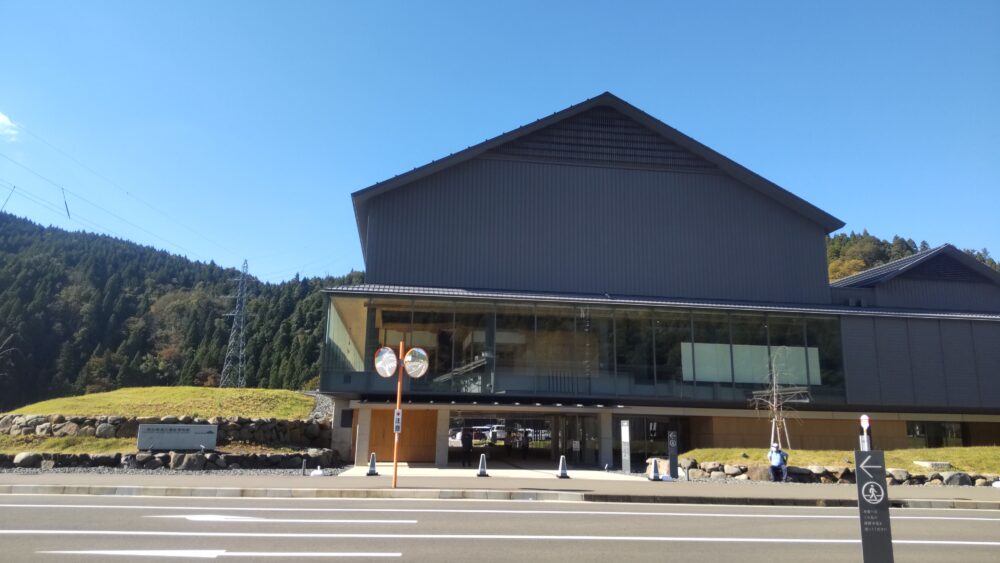
Asakura Clan House Site Garden and Museum
The entire castle town of the Warring States Period has been preserved as ruins, a rare large-scale archaeological site in Japan. In 1971, 278 hectares of the site was designated as a special national historic site, and since then, excavations and maintenance have continued for more than 50 years. In 1991, four gardens at the site were designated as national special scenic spots, and in 2007, 2,343 artifacts excavated from the site were designated as national important cultural properties. The townscape, including the remains of the Asakura feudal lord's mansion, samurai residences, and roads, has been restored.
The Fukui Prefectural Museum of Ichijodani Asakura Ruins exhibits approximately 1,700,000 excavated materials, including many nationally important cultural properties, from the “Ichijodani Asakura Ruins,” a special national historic site. A topographical model of Ichijodani and a restored model of the Asakura House are also on display, introducing the history of the ruins and the Asakura family.
Admission: 700 yen
Admission hours: 9:00-17:00 (last admission at 16:30)
Closed: Mondays, Year-end and New Year holidays
